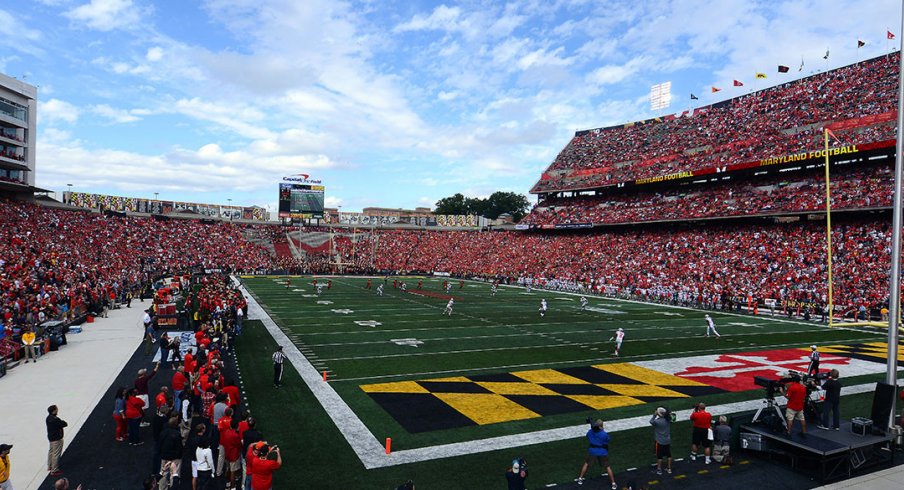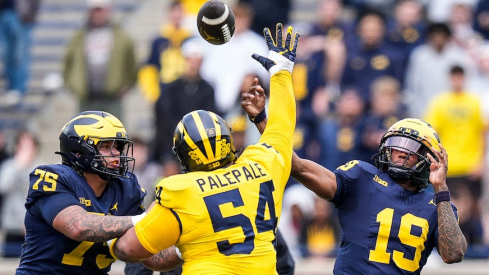With seven home games this season, the Buckeyes will venture away from Columbus five times: four times within Big Ten play, and once within out-of-conference.
Ohio State will visit Dallas, State College, West Lafayette, East Lansing, and College Park, in that order. Let's attempt to rate those five stadiums.
Disclaimer: Only the stadium itself will be rated. Surrounding areas/campuses/towns are not factored into the rating. We will start from lowest and end with highest.
No. 5: Ross-Ade Stadium, Purdue
Built in 1924, Ross-Ade once held a maximum 62,500 spectators, but that number has now decreased (beginning in 2014) to 57,236 due to renovations.
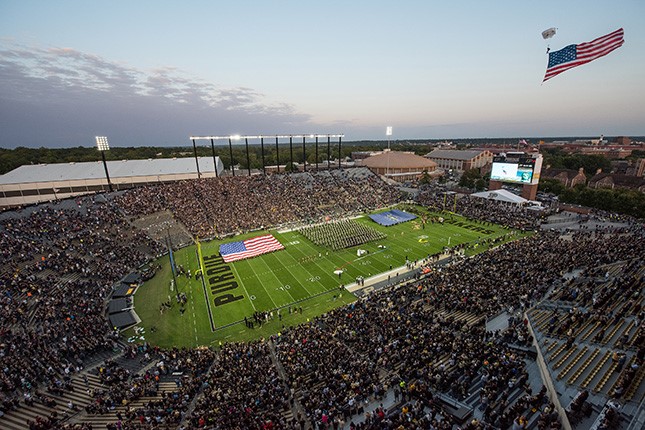
As you can see, there is a nice view out of the south end zone, but no jumbo-screen on the north side, and only a small one on the south side. As you can possibly see above, 6,100 seats in the south end zone were removed and replaced with picnic tables, concession stands, and movable chairs in order to create more of a "party-like atmosphere."
However, as you can see, the sidelines are very close to the stands on either side, as are the south stands to the end zone. Additionally, the north stands are quite far from the end zone, giving the stadium an awkward, off-center look.
The biggest problem, however, is this: Ross-Ade didn't have permanent lights until last season. The first ever home night game in Purdue history was played under temporary lights against Ohio State in 1986, a game that the Buckeyes won 39-11.
The new lights come due to a Big Ten media rights agreement that required all schools to have permanent lights, beginning in 2017.
"As the league has expanded and the number of conference games has increased, it's become necessary to have more flexibility for kickoff times throughout the season at all stadiums," Purdue Athletic Director Mike Bobinski told ESPN. "Adding permanent lights does not mean an influx of night games, but we certainly will have some in the years ahead. Lights also are needed for 3:30 p.m. starts once the season moves into October and beyond."
Purdue hosted two night games last season, beating the Ohio Bobcats while losing to Nebraska.
There are still plans to add an upper deck to both the upper deck and the east side, but no timetable has been set, and construction has not yet begun. For now, Ross-Ade will continue to be at the bottom of the conference.
Here is a neat 3-D look at Ross-Ade.
No. 4, Maryland Stadium, Maryland
Even smaller than Ross-Ade, holding just 51,082 fans, Maryland Stadium is an interesting one.
Relatively young (by Big Ten stadium standards), it was built in 1950, with several renovations since then.
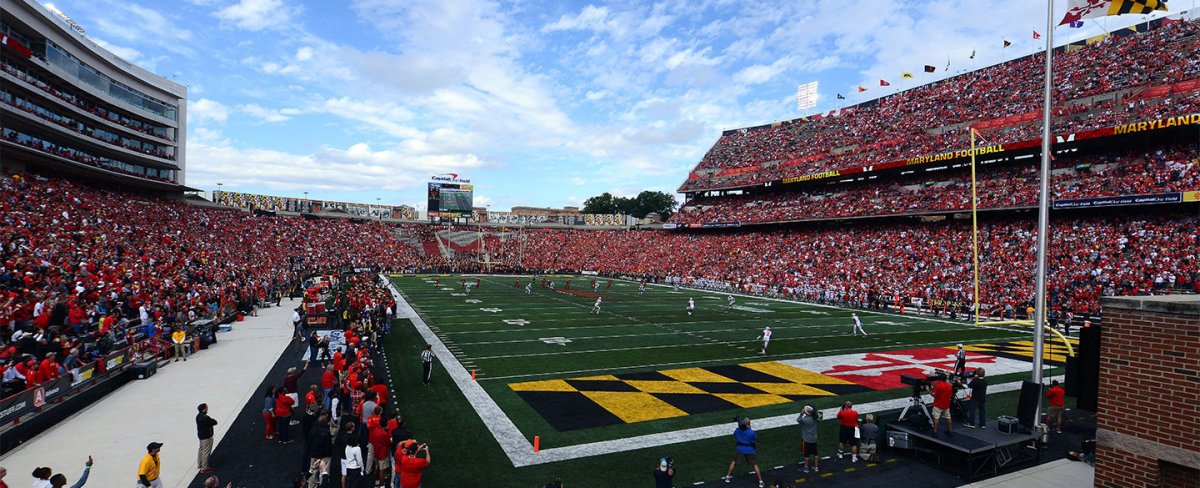
As you can see in the image above, the stadium looks pretty beautiful. With three decks on one side, and a lower bowl plus the press box/luxury boxes on the other, it creates a nice contrast. There is ample room between the sidelines and the stands.
One groundbreaking feature of Maryland Stadium is that it was the first stadium in the country to introduce the "CoolPlay" feature, which keeps the field and surrounding areas up to 15 degrees cooler than traditional fields with rubber infill, if necessary. Maryland Stadium features two video boards, with one being installed on the west side before the 2008 season.
Maryland is still planning to increase stadium capacity over 60,000, although it depends on whether or not they are able to sell the 63 luxury suites that they installed after the 2008 season. No timetable has been established for the construction.
No. 3: Spartan Stadium, Michigan State
Spartan Stadium holds just over 75,000 fans, making it the sixth-largest in the Big Ten conference. Built in 1923, it fits in with other stadiums in the conference in that it is extremely old.
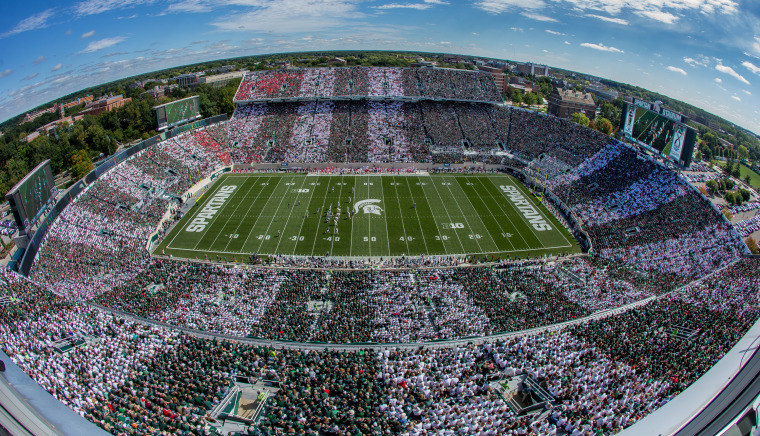
As you can see above, there is not much room between the sidelines and the stands, but the three (!) video boards, plus the overall bowl shape are both huge pluses. I've heard that the views from the upper deck are phenomenal.
Spartan stadium is now the tallest building in East Lansing, due to the addition of a new press box, 24 luxury suites, and 862 club seats back in 2005.
Like Ross-Ade, Spartan Stadium did not have permanent lights until the 2017 season. It has hosted two concerts, however, as the Rolling Stones performed in 1994 and U2 in 2011.
A cool feature that you see above is the ability for fans to "Stripe the Stadium," in which one section will wear green, the other white, and then repeat throughout the whole place, making a nice contrast of colors and looking simply divine.
No. 2: AT&T Stadium, TCU
Technically this is a neutral-site game, but since the Horned Frogs are 30 minutes away from Dallas, while the Buckeyes are 15 hours, I'm giving TCU the home nod here.
"Jerry's World" is an architectural marvel. The stadium, which opened in 2009, holds 80,000 fans and boasts 342 executive suites.
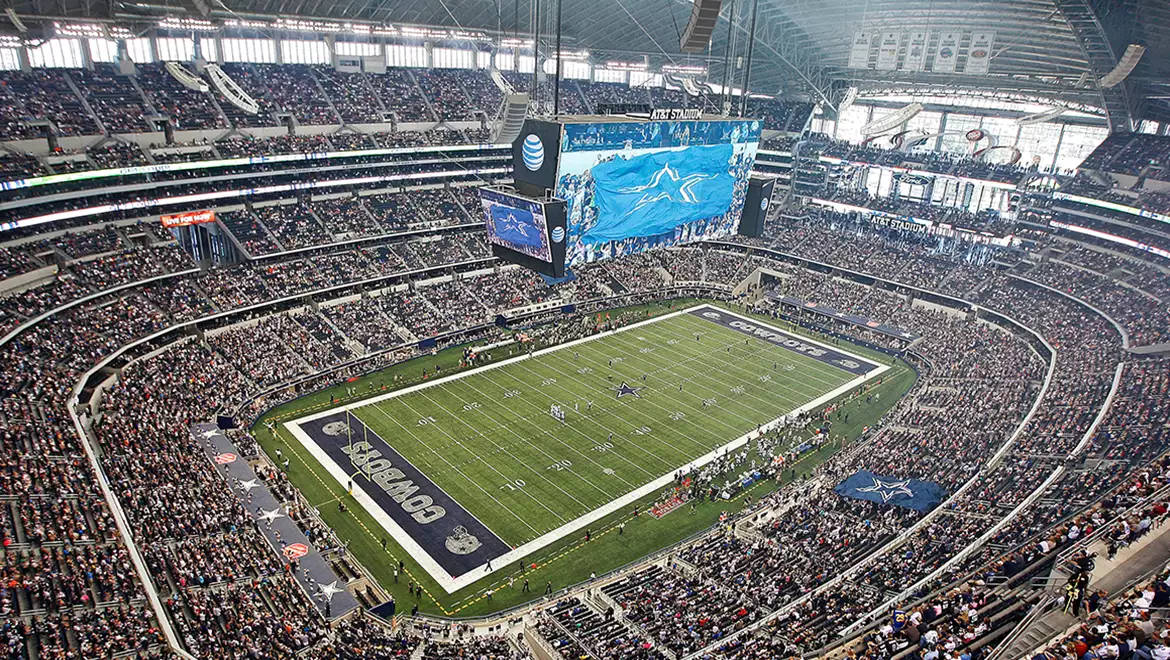
There is ample distance between the sidelines and the field, a humongous overhead video board that also allows the stadium to be used for basketball events, several beautiful decks stacked on top of each other, but not overhanging, and the biggest plus of all: a retractable roof.
The one problem with AT&T Stadium, perhaps, is that it's too nice. Of course, the main tenant of the stadium is the Dallas Cowboys, although it also plays host to the Cotton Bowl. It has also hosted a Final Four, numerous concerts, and much more.
It is not explicitly built as a college football stadium, and its "young" age doesn't give it the rustic feel that the other stadiums on this list hold. While it is an architectural beauty, it is a major outlier compared to the other stadiums on this list.
No. 1: Beaver Stadium, Penn State
The third largest stadium in the world, Beaver Stadium has existed since 1960 and holds 106,572 fans comfortably. Permanent lights were added in 1984.
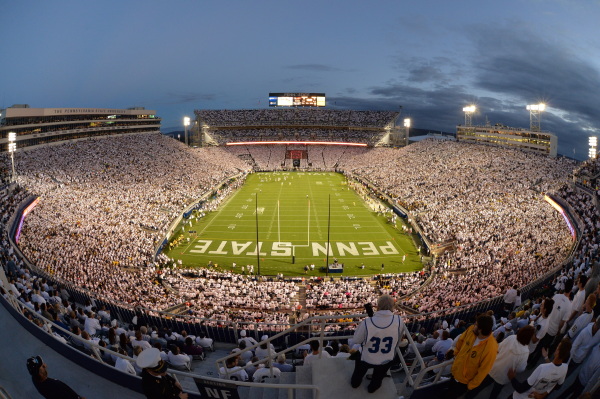
There are two video boards within the stadium, and as you can see, the suites are on one side with the press box on the other, giving it a nice balanced look.
During games in State College, the stadium itself is the 4th largest city by "population" in the state. It follows Philadelphia (1,517,550), Pittsburgh (334,563), Allentown (118,032), and precedes Erie (101,786).
College football fans across the country seem to love the stadium as well. A USA Today poll taken in 2016 said that 41.26% of fans voted Beaver Stadium to be the best in the country. Michigan, Ohio State, Virginia Tech, and LSU rounded out the top five.
In 2015, Penn State officials announced that they would be renovating the stadium within the next ten years. There is a fine line here: Beaver Stadium is already one of the best in the country. You want to make it better, but at the same time cannot afford to mess up the existing tradition and culture. It will certainly be a fine line, but overall, Beaver Stadium is one of the best in the country to watch a college football game.
